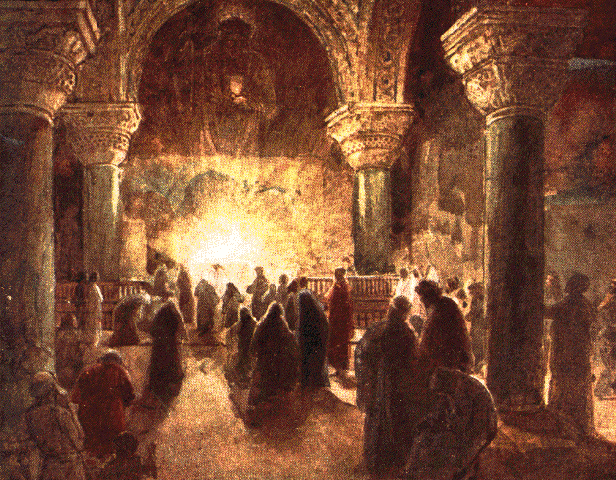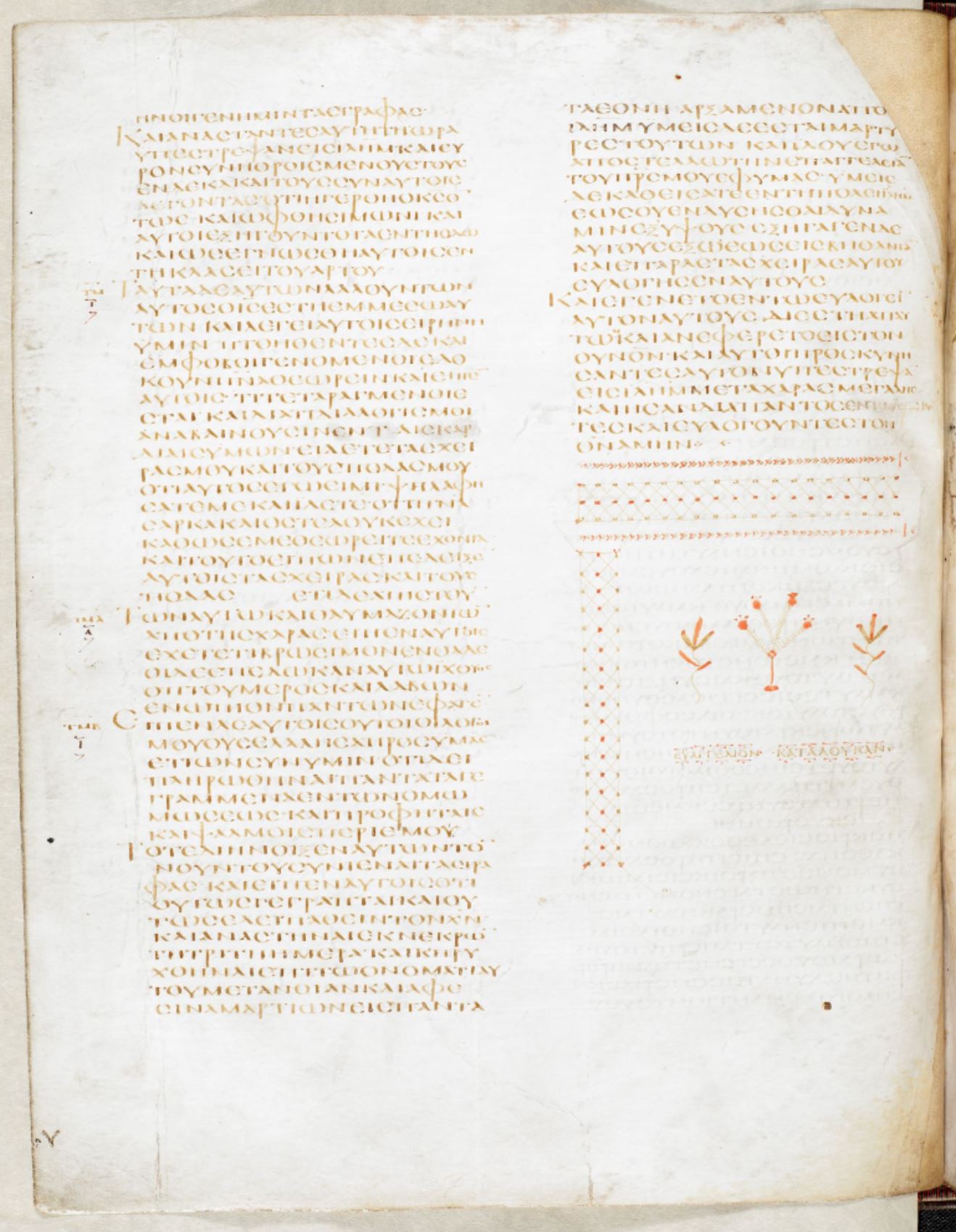 |
| Middle-Age Advancements in Architecture |
Although literacy in Europe during the "Dark Ages" was less than 5%, the "Church" supported and even patronized development in the arts, architecture and some sciences. Indeed, the church saw knowledge as power. However, aside from select royals and aristocrats, few were permitted studies beyond the catechism. Otherwise, education was limited to those of the cloth, usually male clergy. The realms of Europe proved relatively easy to manage with an uneducated, superstitious population.
Roots
The Roman Empire had begun to crumbled just three centuries after the death of Christ, due to the onslaught or religious insurgency and subsequent internal rioting, which occurred simultaneous to barbarian attacks on its western frontier. |
| Ancient Rome |
By the late third century, it was fervent Christians doing the stoning and burning. The tables being turned, the targets at first were those of Hellenistic, polytheistic believers along with their temples of learning, including the Library of Alexandria, the known world's largest repository of knowledge. Afterwards, the carnage would escalate between differing Christian sects, sometimes with completely dissimilar interpretations of Christ's life and works (i.e.: Gnosticism, Arianism, etc.).
Intra-Christian turmoil would continue until the fourth century after Christ's death, when the Church would begin to develop singular canon and administer punishment sanctioned by Church and Emperor for heresy and other crimes of faith. Consequently, it would not be a stretch to say that Western Rome eventually fell to the barbarians because it was preoccupied with internal conflicts.
 |
| Christ and the Pharisees |
Secret Weapon
Ironic to Rome's fall and the Church's eventual subjugation of medieval Europe, which followed centuries later, are the early Christian riots, which had their roots in the very illiteracy that fostered the rapid spread of faith centuries earlier. Roman citizens had a partial literacy rate of 10% to 20%. Partial meaning most could read and only some write.These percentages were considerably lower, even non-existent, amongst native populations within most Roman colonies and provinces. In a province like Judea, literacy was limited to the ruling class and Jewish religious elders (Pharisees), with the latter class being restricted to Hebrew scribes and interpreters. Therefore, with Christ's band of immediate followers coming from the poor, sparsely populated fishing village of Nazareth, any chance of literacy would have been remote if not highly unlikely. Still, after all was said and done, Illiteracy would prove to be Christianity's secret weapon for rapid growth and empire-wide acceptance.
Ancient Internet
Imagine a world without word processors, printers, printing presses or copiers. Now go an extra step and imagine one without paper and pen. Literacy was rare but quill and papyrus were downright hard to come by, and not without cost for those with access. Oratory was the Internet of the day. If you wanted to find out if it was time to pack up and escape the barbarian hordes, you would go to the town square and listen to the latest barbarian update from the town crier. When Christ was greeted by cheering crowds in Jerusalem the week before his crucifixion, you can be certain most if not all had gotten his message orally. Without pamphlets, web sites or blogs, Christ had managed to spread his "word". How was this possible? |
| Ancient Roman Public Oration |
 |
| Sermon on the Mount |
Leading up to his eventual crucifixion, the Sermon on the Mount would likely place Christ more at odds with local Roman government and Temple Pharisees than anything else. Even today, this single oration of the Beatitudes are the most quoted scripture of the New Testament and remain the cornerstone argument for distribution of wealth.
Sacred Oral Tradition
Oral Tradition is at the very heart of all scholarly debate over scriptural authenticity. However, long before Christianity, ancient religious practices in Greek and Roman temples were handed down via word-of-mouth with every new generation. So, why not Christianity? Even today, the Kurdish Yazidi of Sinjar, Iraq and Syria practice Oral Tradition, believing the word of God to be altogether too sacred to be placed upon something as base as paper by mortal hand. |
| Early Christian Gatherings |
All was done with the intentions of inspiring new converts. However, this path would eventually lead to new and different interpretations of Christ's message and works. Consequently, by the fourth Century following Christ's death, the Emperor Constantine would be forced to convene the Council of Nicaea to begin remedying often violent division within the new church.
 |
| Saul of Tarsus (Paul the Apostle) |
Illitteratus Salvus
There were distinct advantages to this lack of literacy in the early Church. Unlike scrolls sitting on a shelf, people have legs. If the apostles had been literate, they would, like most executives today, have been buried in either paperwork or meetings and not been out in the field making it happen. Besides, if everything had been put to the quill, where would the audience be found to read it, certainly not the illeterate poor who comprised the largest portion of early conversion? Conversely, an avid readership would have discovered itself amongst the very Roman government officials intent on stamping out Christianity. Illiteracy assured the lack of a paper trail. When an unfamiliar, potential government spy joined a congregation, it would have been easy for an Apostle to simply turn to the subject of Roman government or some taxation issue with no convicting evidence to hide. |
| Fragment of Early Scripture |
There are those today who would dissect the Bible and argue that every word was written exactly as it appears today, and only an atheist would call the disciples of Christ "illiterate". Conversely, an equally faithful person might also argue the Bible to be exactly what it was intended it to be, hiccups and all. I would simply add that Christianity would probably not have survived even one century if it hadn't been for the rapid spread of apostolic on-foot oral tradition. Just think, most of the civilized, illiterate world had converted or at least heard the word of Christ in less than three hundred years, and without an internet! It's an incredible accomplishment no matter what your views or beliefs.
Got Feedback?
Comments? Questions? Corrections? Any feedback at all? Just click on the comments box at the bottom of this page and enter your thoughts. All comments are welcome.
Santuario de Guadalupe, the oil painting by Tom Mallon. This 42" x 22" canvas is the latest addition to the Santa Fe Portrait Series. The Santuario is the oldest shrine to Our Lady of Guadalupe in the US.
Visit this later update by CLICKING HERE
Shostakovich and Cultural Snobbery, Could anyone survive Stalin's Purges, compose a large body, write for himself and the masses while producing constantly great work?
Visit this later update by CLICKING HERE
Tom Mallon's website "MallonArt". This website will provide you with links to all his paintings, drawings and other artwork portfolios, including the ongoing series entitled the Santa Fe Portrait.
Visit this later update by CLICKING HERE



